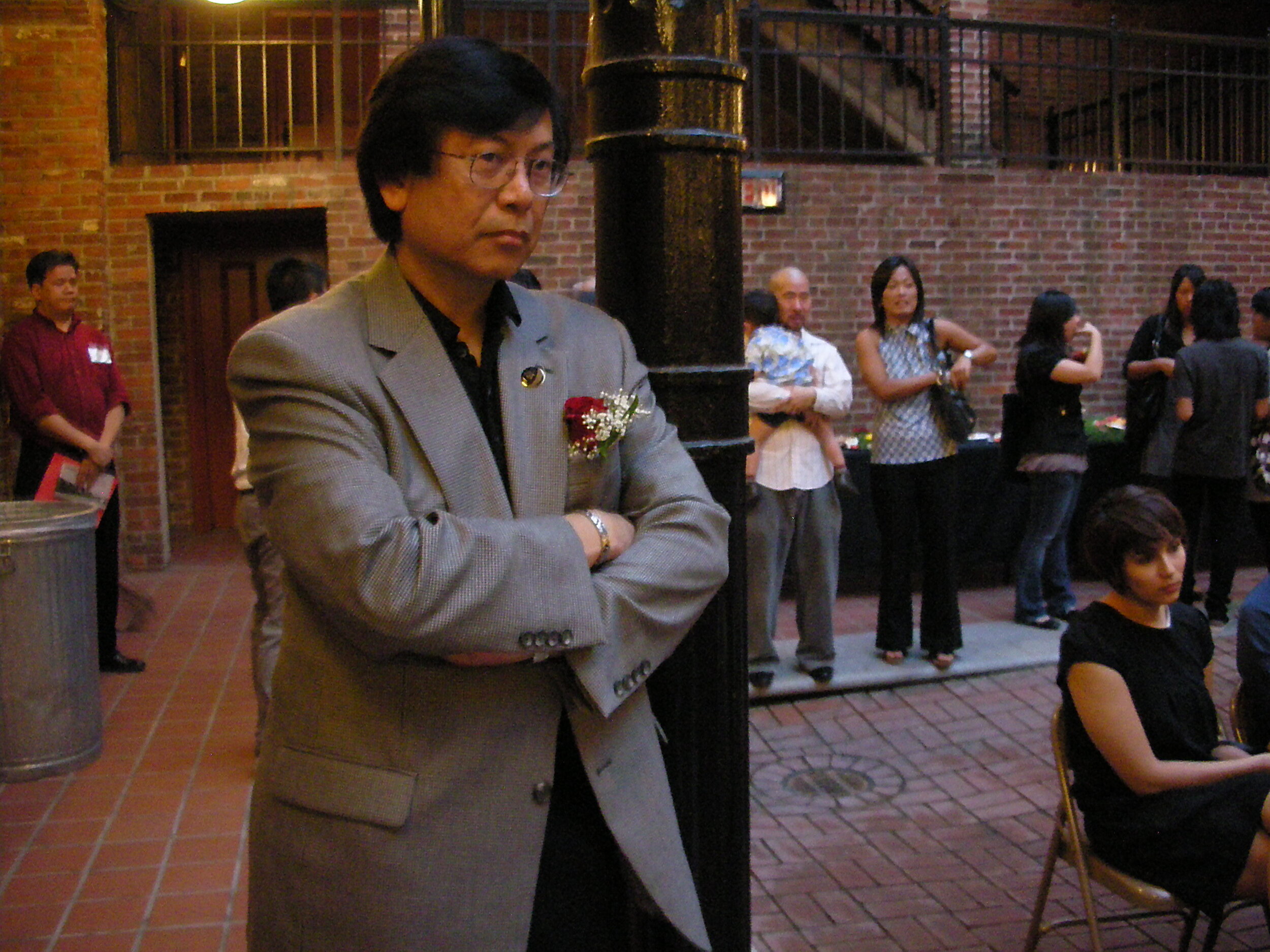Corky Lee: Undisputed, Unofficial, Unforgettable
/By Abraham Ferrer
Legacies are what's on my mind… Early on the morning of January 27, 2021, I discovered that yet another of our Asian American pioneering activist artists had flown the coop, the latest in a conga-line of cultural workers who have succumbed to COVID-19. I've known this cat, Corky Lee, for over 30 years, but that time is a drop in the bucket compared to those throughout the Asian Pacific American community who have worked with him, struggled with him, organized with him, and in some cases got into cat-fights with him over things both trivial and substantial. My bonds with Corky coalesced around two mutual areas of passion — one, of course, "movement" inspired photo documentation, which he first pursued starting with his early involvement with New York Chinatown’s legendary Basement Workshop in the early 1970s; and the other, our mutual support for Asian CineVision, an organization for which he made images for and about for nearly as long as ACV has been in existence.
November 15, 2008: Celebrated photographer Corky Lee listens in as a program heralding a mid-career retrospective of his work commences at the Chinese American Museum's headquarters at El Pueblo de Los Angeles. (Photo: Abraham Ferrer/Visual Communications Photographic Archive)
I first met Corky at the 1989 Asian American International Film Festival, where I reunited with ACV’s irrepressible Executive Director Peter Chow and met his "Number One," the director of AAIFF Marlina Gonzalez and ACV staff member/man-about-town Bill Gee. That was my first time setting foot on the island of Manhattan, to present a short animated film at their film festival, and while I wandered the city as a means of minimizing culture shock, I seriously fixated on the personality quirks of most everyone I met that week. While Marlina was busy running the film festival and Peter was busy being Peter, Corky and Bill were running around documenting the festival at all its different venues. I was bemused at the two of them and the sartorial flair with each approached their work — while Corky showed up most times in a dark business blazer, slacks, and patent leather loafers, Bill ran around dressed like Sonny Crockett from MIAMI VICE (unstructured one-button sportscoat with the sleeves rolled up, baggy khakis, and matching espadrilles).
I remember quite clearly the semi-comic picture of the two of them positioned stage-left at most screenings, multiple cameras at the ready, in various stages of preparation to shoot Q&A sessions and celebrity appearances. Their overwhelming camera gear — multiple steel bodies augmented with battery-powered auto-winder/pistol grips; elaborate strobe units; massive zoom lenses — made me wonder at times whether they were documenting the highlights and goings-on during the run of the festival, or whether they were, figuratively, going big-game hunting.
By comparison, I look at the gear I typically packed in those days and that I brought with me on that first trip to the Big Apple — a single Nikkormat camera body, a single solitary wide-angle lens, and no flash due to my habit of playing with available-light photography. I didn’t want to be burdened down with camera gear when I plainly had no intentions of looking or acting like a paparazzi. And many times since that weekend, during subsequent trips to New York City, I always came away with the impression that as a documentary photographer, I could not hope to compare with Corky Lee, much less Bill Gee. I think watching them work (and let’s face it, preen) inspired me to go “minimal” with my own photographer’s toolbag.
Anyone who has known or even heard of Corky Lee knows of his self-styled reputation as the "undisputed, unofficial Asian American photographer laureate." I certainly knew of it — it said so on his business card, and he made sure you knew it. I once wrote a story for the Amerasia Journal on my own community-based photo practices, and noted my displeasure with that level of conceit and self-promotion. After all, Visual Communications photographers were noted for endeavoring to be invisible and to not draw too much attention to themselves when working in the field. That was the way we did things at VC. But Mary Uyematsu Kao, then the Associate Editor of Amerasia, nixed my statement and asked me to replace it with something milder and not so pointed, because my sentiments did not reflect what she saw as Corky’s impact through his art. And in later years, I’ve come to realize that Mary was right.
You see, what many have never realized was that, upon even a cursory examination of his massive portfolio of images documenting the full range of Asian American stories, peoples, and communities through his camera lens, Corky Lee could more than back up his rather cheeky self-bio as perhaps one of the most comprehensive and artful photo documentarians of his generation.
For well over a half-century, just as long as Visual Communications has even been around, Corky has steadfastly documented the ongoing Asian American experience, and continued to do so right up to the time he took ill. As I remember from talking with him and by perusing his story, his art activism was a direct result from taking umbrage over the whitewashing of American history and its institutionalized erasure of Asian American and Pacific Islanders from the chronicling of the greater American experience. His camera, and the endless rolls of film he exposed, sought to recalibrate the parameters by which Asian Americans were both depicted in mainstream media, and observed the ongoing process of acculturation and “inclusion” of these communities into the larger fabric of a pluralistic America.
I look at his work every now and then — whether published in movement periodicals as BRIDGE Magazine or hanging in galleries where mid-career retrospectives of his work have been mounted in recent years — and realize that his work has given light to the struggles and successes of our Asian American and Pacific Islander communities for all these many years. That is quite a legacy; for all of us who characterize themselves as “cultural workers,” Corky Lee’s artistic legacy is a challenge we all now have to live up to.
November 15, 2008: As a program heralding a mid-career retrospective of his work commences at the Chinese American Museum's headquarters at El Pueblo de Los Angeles, celebrated documentary photographer Corky Lee is greeted by Tom Eng of the Chinese Historical Society of Southern California, and by Mario Reyes of the RAFU SHIMPO. (Photo: Abraham Ferrer/Visual Communications Photographic Archive)
Back on November 15, 2008, the Chinese American Museum of Los Angeles feted Corky with a long-overdue mid-career retrospective. Though I made images that night with a crappy-ass Nikon CoolPix digital camera, I did manage to expose a couple of frames that I've kept in the VC Archives as a keep-sake. More recently, in Fall 2019 Corky made time to divert from a business seminar he attended to drop into our offices in Los Angeles Little Tokyo to purchase a DVD of the VC feature film HITO HATA: RAISE THE BANNER, and to — what else? — bitch and moan about the current state of APA cinema.
Locally, his legacy continues through the likes of kindred spirits as the Chinese Historical Society of Southern California's Tom Eng and longtime Rafu Shimpo staff photographer Mario Reyes.
As for me, I'm glad that I could count Corky Lee as a friend and ally. Given the disquieting times we currently live in, his passing only serves as a reminder that I'm getting too old to put up with the all the social and racial inequity he's steadfastly documented and brought to the harsh light of cultural interrogation all these long decades. I just hope I have even half the staying power he's had over the course of his long and productive run.
Abraham Ferrer is the Archives & Distribution Manager at Visual Communications. He has been with the organization since 1985.




